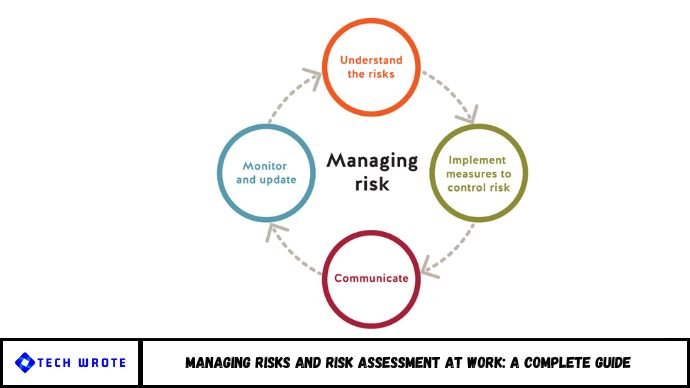Risk assessment at work is essential for protecting employees, reducing workplace incidents, and meeting legal safety requirements. This article explores how to identify and manage workplace risks through structured assessments. You’ll learn key steps, best practices, and how to maintain a safe, compliant environment.
Introduction: Are You Overlooking Risks in Your Workplace?
Every day, businesses operate under the assumption that things will run smoothly—but one overlooked hazard can lead to injury, costly downtime, or legal action. In fact, the Health and Safety Executive (HSE) reported over 561,000 non-fatal injuries in UK workplaces during 2023 alone.
Managing risks and conducting workplace risk assessments isn’t just a legal requirement—it’s a critical part of ensuring employee well-being and business continuity. This article covers the essentials: from identifying hazards to implementing controls and creating a safer workplace culture.
1. What Is Risk Assessment in the Workplace?
A risk assessment is the process of identifying potential hazards in the workplace, evaluating the risks associated with them, and implementing measures to control or eliminate those risks.
Why it matters:
- Prevents injuries and illnesses
- Reduces financial losses from incidents
- Supports compliance with health and safety laws
- Boosts employee confidence and morale
2. Key Elements of Effective Risk Management
1. Hazard Identification
Start by examining your work environment to find anything that could cause harm:
- Slips, trips, and falls
- Electrical or fire hazards
- Exposure to chemicals
- Stress or mental health risks
- Improper use of machinery
2. Risk Evaluation
Once hazards are identified, assess:
- Who might be harmed and how
- The likelihood of the hazard causing harm
- The severity of possible outcomes
Use a risk matrix to categorize risks by likelihood and impact.
3. Control Measures
Apply the hierarchy of controls:
- Eliminate the hazard if possible
- Substitute with safer alternatives
- Engineer controls (e.g., barriers, ventilation)
- Administrative controls (e.g., training, signage)
- Personal protective equipment (PPE) as a last resort
4. Documentation and Communication
- Record your findings
- Develop safety procedures
- Share outcomes with your team
- Assign responsibilities clearly
5. Review and Update Regularly
Risk assessments must be dynamic. Review them:
- After incidents or near misses
- When introducing new equipment or procedures
- At least annually as part of compliance
3. Legal Responsibilities and Compliance
Employers are legally obligated to assess and manage workplace risks under various regulations, including:
- The Health and Safety at Work Act 1974 (UK)
- OSHA regulations (US)
- ISO 45001 for international standards
Non-compliance can result in:
- Heavy fines
- Legal claims
- Damaged reputation
- Employee turnover
4. Practical Tips for Workplace Risk Assessments
- Involve employees in identifying hazards—they often spot things management misses
- Use templates or digital tools to streamline documentation
- Assign a competent person to lead assessments
- Keep training up to date to reflect evolving risks
- Focus on continuous improvement, not just compliance
FAQs
1. What is the main goal of a workplace risk assessment?
To identify hazards and take steps to prevent harm to employees, contractors, and visitors.
2. Who is responsible for conducting risk assessments?
Employers must ensure assessments are done, but they may delegate the task to trained individuals.
3. How often should a risk assessment be reviewed?
At least annually, or sooner after changes to the workplace, processes, or reported incidents.
4. What are the 5 steps of a risk assessment?
Identify hazards, assess risks, control risks, record findings, and review regularly.
5. Do all businesses need to do a written risk assessment?
Yes, if you have five or more employees, documentation is legally required in many regions.
6. Can digital tools help with risk assessments?
Absolutely. Software can simplify tracking, updates, and reporting—especially in larger organisations.
Conclusion
Risk assessment isn’t a one-time task—it’s an ongoing process that protects your people and your business. By identifying hazards, evaluating risks, and implementing controls, you create a safer workplace and a stronger organizational culture.
Don’t wait for an accident to force your hand. Start managing risks today, build a proactive safety plan, and stay compliant with workplace health and safety standards.


